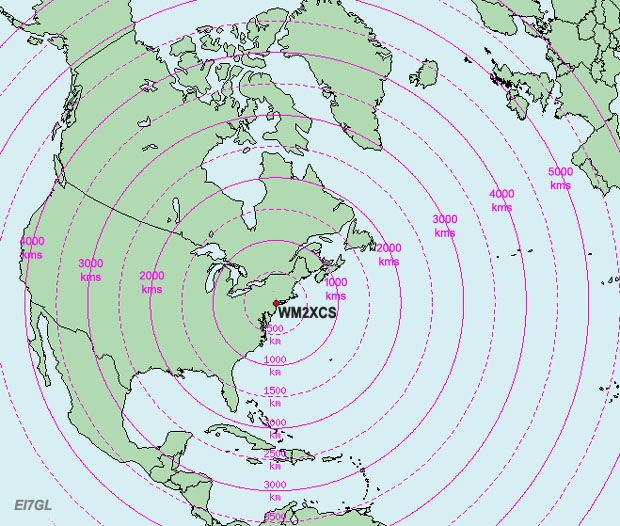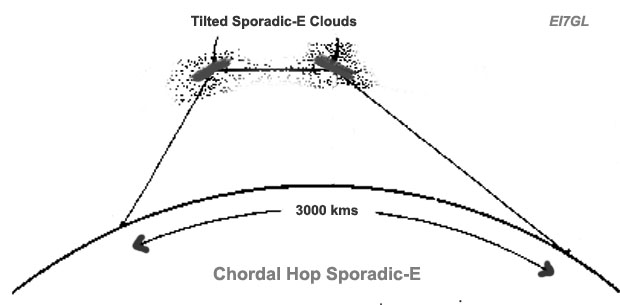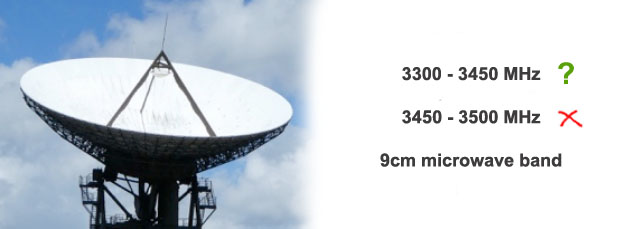George, N2CG has one of the seven experimental 40 MHz permits in the USA and was given the callsign WM2XCS. He has just announced that he now has an operational 40 MHz beacon from his location in New Jersey.
antenna.
73, George WM2XCS/N2CG"
Analysis... This beacon should be widely heard once the Sporadic-E season begins in the second half of April. The map above shows the typical range for Sporadic-E signals on the 40 MHz band while most of the openings should be around the 1200-1800km mark.
This in effect means that stations in Wisconsin, Illinois, Tennessee, Georgia and the north of Florida are the most likely to hear it during the Summer months.
There will be openings in the range of 2000-2300kms but these will be weaker.
During the months of May, June & July, there should be more multi-hop Sporadic-E openings. This should allow openings from New Jersey to California and from New Jersey to Europe.
The fact the beacon is CW only and doesn't have a digital component like FT8, PI4 or WSPR means the conditions will really need to be good.
What will be really interesting to see if the rising solar flux levels result in an opening via the F2 layer? Will the MUF reach the 40 MHz band?
Certainly, F2 layer propagation from New Jersey to California and Europe on 40 MHz at the peak of the upcoming sunspot cycle will be possible.
It would also be very interesting to see if anyone in South America is able to hear this beacon.
Listening for the WM2XCS beacon... For the 40 MHz band to open, the 28 MHz band below it will almost certainly be open as well.
I have compiled a short list of 28 MHz beacons which are in the general area of WM2XCS...
WN2A/AK2F 28.2085 FN20OU
K3FX/B 28.2160 FN20XE
N3TVV/B 28.2320 FN20DU
N2MH/B 28.2325 FN20UT
WA3MCK/B 28.2400 FN21BF
KG2GL/B 28.2460 FN20WT
KA3JOE/B 28.2495 FN20MD
KB2RSK/B 28.2685 FN22QW
WA3NFV/B 28.2700 FN20IH
If you can hear any of those beacons on 28 MHz then that would be a good time to look for the WM2XCS beacon on 40.685 MHz.
1) For more information on the 8m band, check out my 40 MHz page.


















































